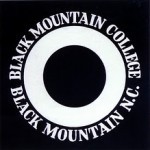C.B. Murphy's Blog, page 10
December 28, 2012
Apocalyptic Ennui Redux
Given the amount of hoopla the recent end-of-the-world “nonevent” of 12/12/12 generated, I’m surprised googling “apocalyptic ennui” didn’t deliver much, either–just a few quirky blogs and song lyrics. Maybe that means it’s a really meaningful connection of the two words. Who am I to say?
Some years ago, I realized when writing a review of “Boys Adrift” that apocalyptic ennui is a significant part of my psychology and inevitably my politics at any given moment. Growing up in the 60′s (fear of nuclear war) then switching to “hippie” fears (global cooling, nuclear war, the draft, American culture generally, unhealthy food and religion) was exhausting enough. I wasn’t ready to get on the next bandwagon: global warming, global capitalism, American culture–especially overseas, antibiotics in food leading to new killer bacteria, killer viruses like Ebola, terrorism at home and abroad, destruction of species, inequality of wealth–leading to revolutions, crash of the dollar, depletion of oil, ethanol destroying the food supplies, and the inevitable end of the world, prophesied by the ancient Mayans and contemporary doomsday aficionados alike.
Forgive me if some of your favorites aren’t on the list. What to do? It’s all very politicized (rather than political) now. By politicized, I mean people listen for their catch phrases, for the language that tells them if you’re a good guy or a bad guy depending on what side you’re on. Liberals listen for a disparaging attitude on global warming, or a lukewarm stance on the cause du jour. Conservatives listen for key phrases like “social justice” or “economic equality” to help them identify a person as someone not to listen to. That’s politicized. Political is talking. Too bad it’s almost dead here in the US. (Talking as opposed to “chattering” I mean. There’s still plenty of chattering.)
With apologies to my friends who enjoy being skeptical of evolution, this is all part of my “monkey mind” theory. I suspect we, the primate part of us, is programmed to be fearful, to react to danger to the community. This is amateur sociobiology to be sure (which means you fantasize monkey scenarios to explain stuff, lots of fun for monkey lovers), but it does explain why we are constantly looking for new ways our lives and/or civilizations will be destroyed. The difficult part is that no matter how long your list is, some of the things on the list will kill you. Depends on your list, of course.
For example, I like Bjørn Lomborg. (OK, that makes me what politically?) Anyway, his attitude is: Yes, global warming is real, yes human activity is responsible for the bulk of it, but it will be very difficult and expensive to have any impact at this point on the trend. Hence, if you want to help the earth and save people, he gives a list of things to do (like help get drinking water to millions of people, flood and hurricane damage reduction, malaria control, address starvation) that would show an immediate positive impact for the dollars spent. Problem is, solving extensive, endemic “old/boring” problems like this doesn’t do anything to address our sense of panic (monkey panic) that we are going to die. It’s much too rational and slow and methodical to help assuage our sense of imminent doom.
All said, 12/12/12 was anticipated and feared and fretted over ad infinitum, and (surprise?) the collective panic was all for naught. Once again, apocalyptic ennui spared me the drama.
December 22, 2012
Sons of Anarchy, Antonin Artaud and a house ‘o poets
So I’m watching the second to the end episode of SONS OF ANARCHY (SOA), Season Five. I already feel a little connection because an author I really like, Kem Nunn, is now writing for the show. He’s known for his “surfer noir” and the man behind the short-lived but brilliant HBO show “John From Cincinnati.” There’s a new character on SOA they’ve introduced, an ex-marshall who is on a revenge junket involving our biker gang. He’s a quiet man with a pony tail and you know evil stuff lurks behind them California dreamin’ eyes. True enough, as we get to know him as a violent fellow, we zoom in on him sitting in a motel room reading (very clear on the screen, they want us to know this book!) “Watchfiends and Rack Screams.”
 So I google it. Turns out it’s the work of Antonin Artaud, a wild French dramatist best known for the provocative “Theater of Cruelty.” He was all the rage when I was in college at the University of Michigan, though his idea of cruelty was less Marquis de Sade and more aligned with the presentation of violence in stylized Balinese theater. Anyway, this “Watchfiends” book was translated by Clayton Eshleman. At the time I was reading Artaud in college, I was also learning a lot about the Black Mountain School of artists, writers, and musicians primarily from an anthropology grad student named Richard Grossinger. Richard was my mentor in “underground film” which plays a big part in the plot of “End of Men.” Richard is the author of many books including “Embryos, Galaxies and Sentient Beings,” “Planet Medicine,” and “Dark Pool of Light: The Crisis and Future of Consciousness.” Smart. He’s also the father of filmmaker Miranda July.
So I google it. Turns out it’s the work of Antonin Artaud, a wild French dramatist best known for the provocative “Theater of Cruelty.” He was all the rage when I was in college at the University of Michigan, though his idea of cruelty was less Marquis de Sade and more aligned with the presentation of violence in stylized Balinese theater. Anyway, this “Watchfiends” book was translated by Clayton Eshleman. At the time I was reading Artaud in college, I was also learning a lot about the Black Mountain School of artists, writers, and musicians primarily from an anthropology grad student named Richard Grossinger. Richard was my mentor in “underground film” which plays a big part in the plot of “End of Men.” Richard is the author of many books including “Embryos, Galaxies and Sentient Beings,” “Planet Medicine,” and “Dark Pool of Light: The Crisis and Future of Consciousness.” Smart. He’s also the father of filmmaker Miranda July.
 Thanksgiving, Mount Desert Island, 1970. Richard invited me to bring my new girlfriend (my future wife, Judith Ragir) to a feast of poets at their rented house in Maine. There was a batch of moderately famous people there including Clayton Eshleman. People read their work, ate, and petted the cats. It was the only time I met Mr. Eshleman so claiming “one degree of separation” from Sons of Anarchy (through Antonin Artaud’s translator) is a bit of a stretch. In looking over Eshleman’s wiki page, however, I saw we had a few other Venn Diagram overlaps. In his book of poetry entitled “Reciprocal Distillations” (2007) Eshleman is inspired by a number of artists I am interested in, including: the outsider artist Henry Darger, the 15th century surrealist Hieronymus Bosch, and Paleolithic cave art.
Thanksgiving, Mount Desert Island, 1970. Richard invited me to bring my new girlfriend (my future wife, Judith Ragir) to a feast of poets at their rented house in Maine. There was a batch of moderately famous people there including Clayton Eshleman. People read their work, ate, and petted the cats. It was the only time I met Mr. Eshleman so claiming “one degree of separation” from Sons of Anarchy (through Antonin Artaud’s translator) is a bit of a stretch. In looking over Eshleman’s wiki page, however, I saw we had a few other Venn Diagram overlaps. In his book of poetry entitled “Reciprocal Distillations” (2007) Eshleman is inspired by a number of artists I am interested in, including: the outsider artist Henry Darger, the 15th century surrealist Hieronymus Bosch, and Paleolithic cave art.
Small surreal world this is.





